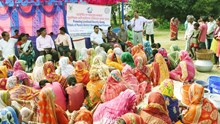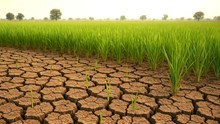
One of the most notable initiatives in this Budget is the launch of a five-year Cotton Mission aimed at addressing the challenges of stagnant cotton productivity, particularly in extra-long staple varieties. The mission will provide science and technology support to farmers, in line with the '5 F' principle, which will boost farmers' incomes while ensuring a consistent supply of quality cotton. The '5 F' principle includes: Farm to Fibre; Fibre to Fabric; Fabric to Fashion; and Fashion to Foreign.
This initiative is designed to reduce India's dependence on cotton imports, stabilize raw material availability, and increase the global competitiveness of India’s textile sector, where micro, small, and medium enterprises (MSMEs) account for around 80% of the capacity.
Additionally, the government has introduced new measures to promote the domestic production of technical textile products like agro-textiles, medical textiles, and geo-textiles. Shuttle-less looms, which are essential for the manufacturing of these products, will now be exempt from duties.
Specifically, the duty on Shuttleless Loom Rapier Looms (below 650 meters per minute) and Shuttleless Loom Air Jet Looms (below 1000 meters per minute) will be reduced to zero, down from the previous rate of 7.5%. This reduction will help reduce the cost of high-quality imported looms, facilitating modernization in the weaving sector and boosting the "Make in India" initiative for technical textiles.
The Budget also addressed the competitiveness of Indian knitted fabric manufacturers by raising the Basic Custom Duty (BCD) on knitted fabrics. The BCD on nine tariff lines of knitted fabrics will increase from ‘10% or 20%’ to ‘20% or Rs. 115 per kg, whichever is higher,’ a move aimed at curbing cheap imports and supporting domestic production.
To support the handicraft sector, the Budget extended the time period for exporting handicrafts from six months to one year, with a possibility of extending it by another three months. This change, along with the addition of nine items—such as wool polish materials and cattle horn—to the list of duty-free inputs for export production, is expected to boost the sector's export potential.
Recognizing the significant role of MSMEs in the textile industry, the Budget also highlighted several measures to enhance their growth. These include a focus on export promotion, credit enhancement, and the creation of a conducive environment for MSMEs through the National Manufacturing Mission, Export Promotion Mission, and Bharat Trade Net. Furthermore, the Budget proposes a Fund of Funds and revised criteria for MSME classification, aimed at fostering employment and entrepreneurship within the textile sector.
















